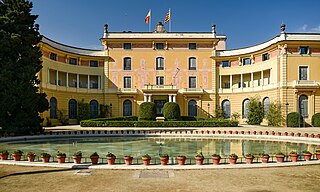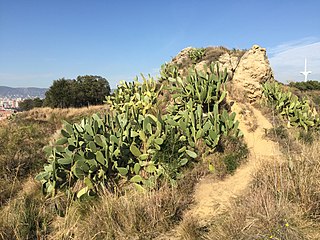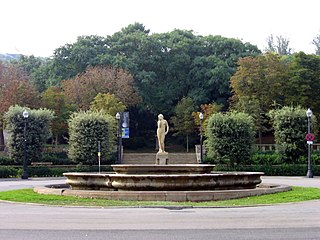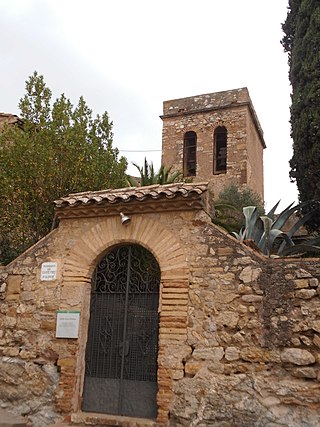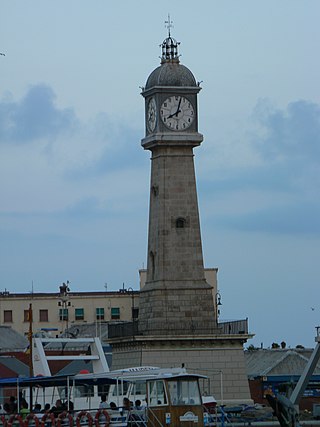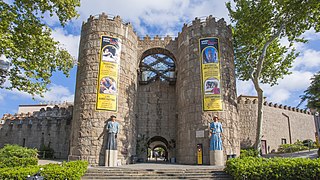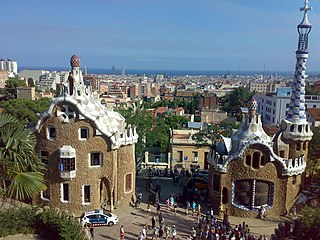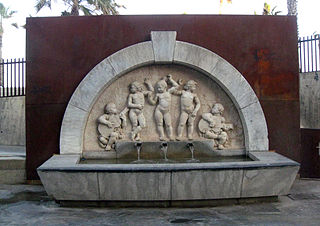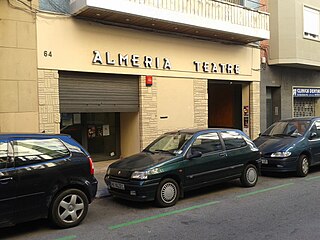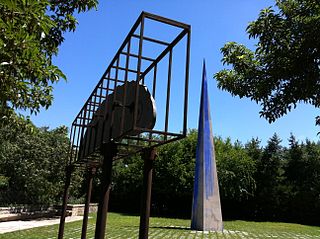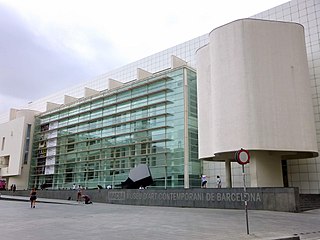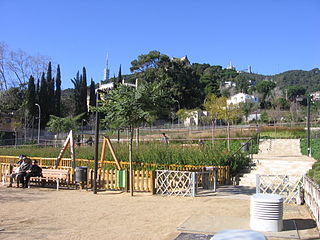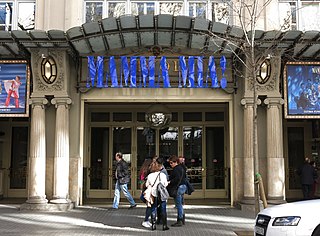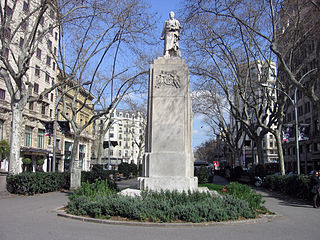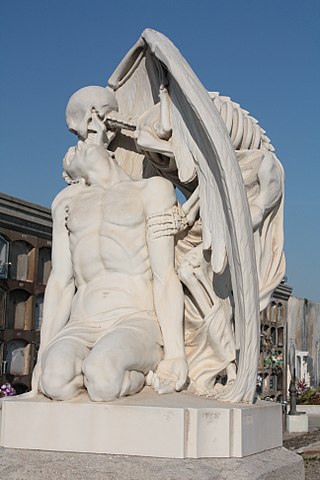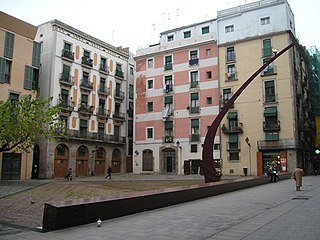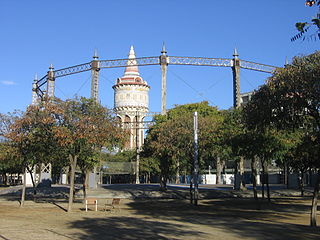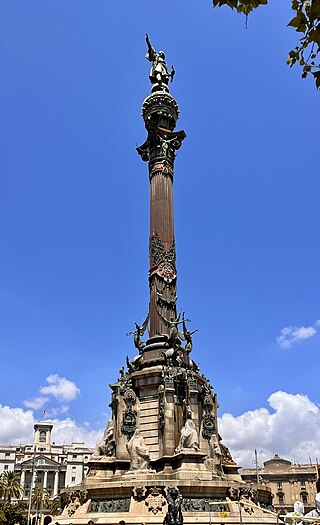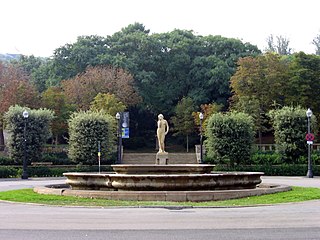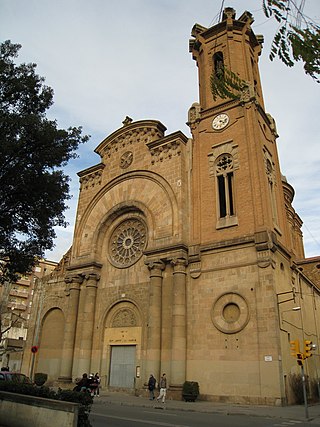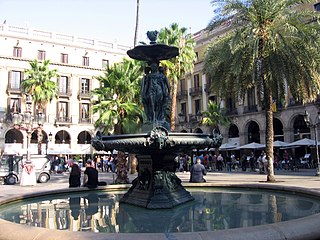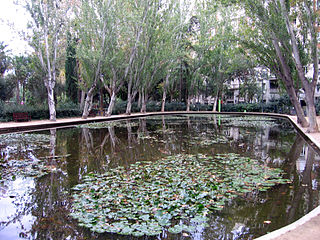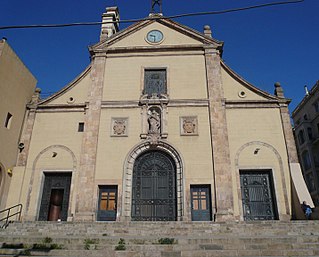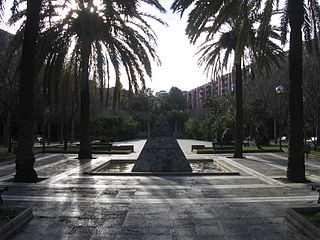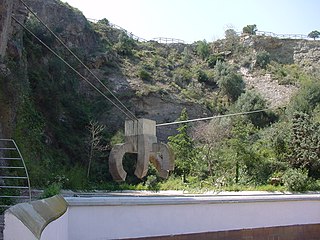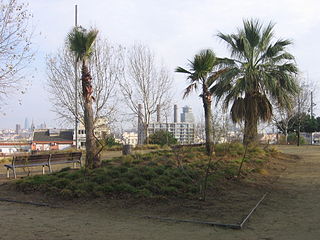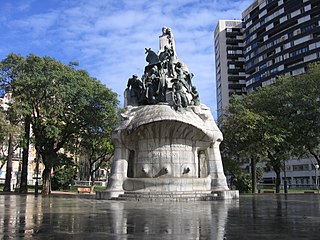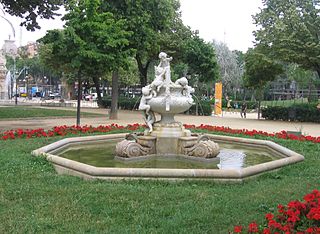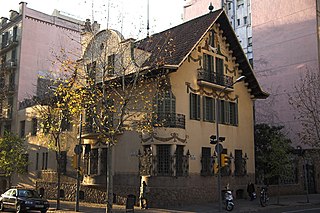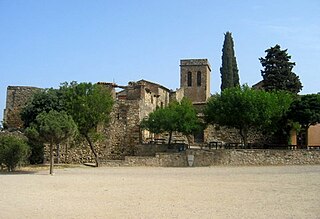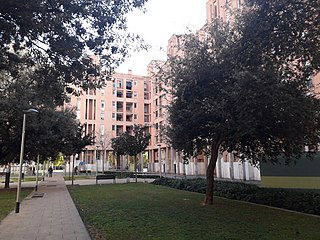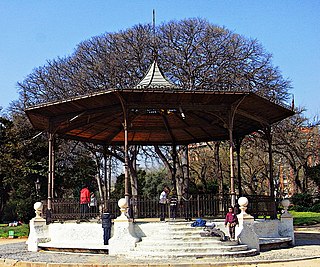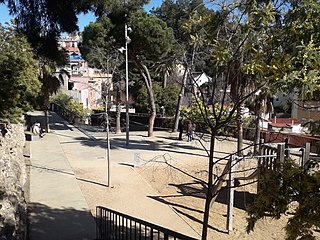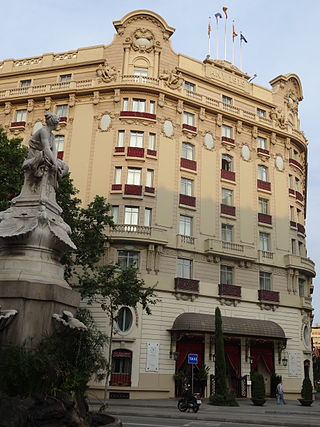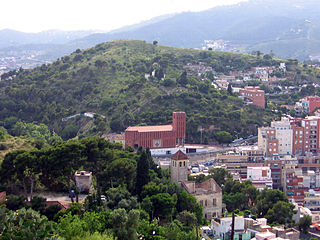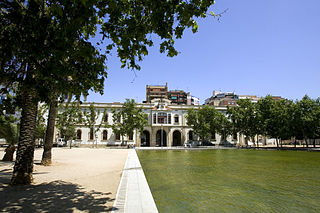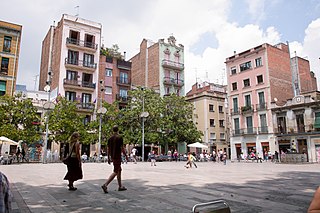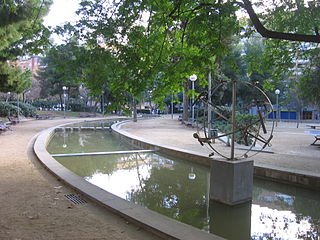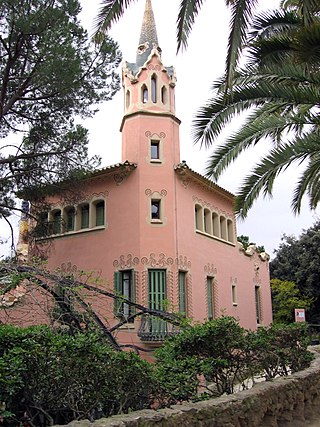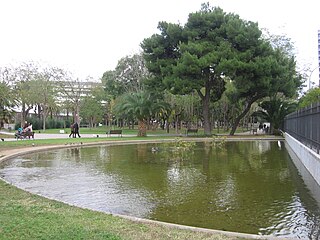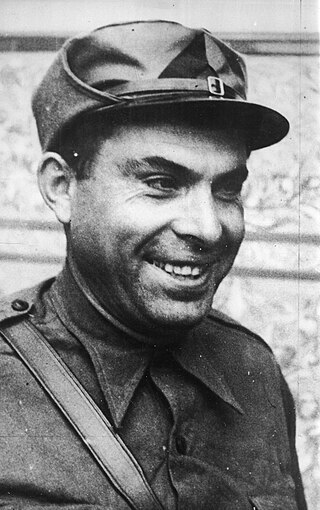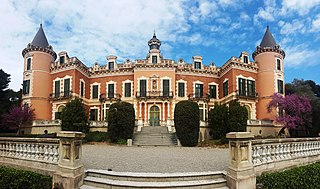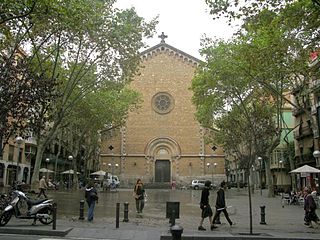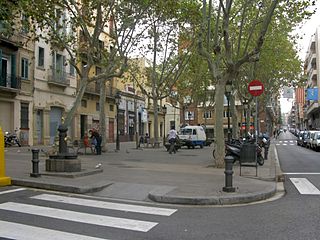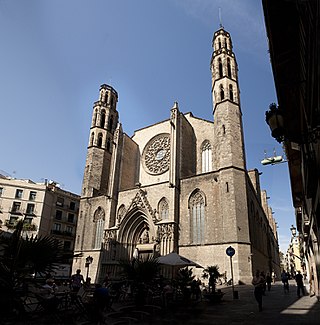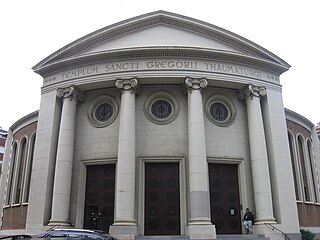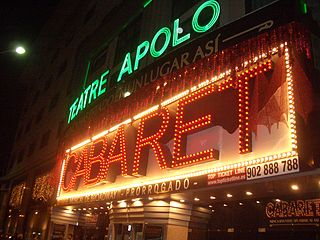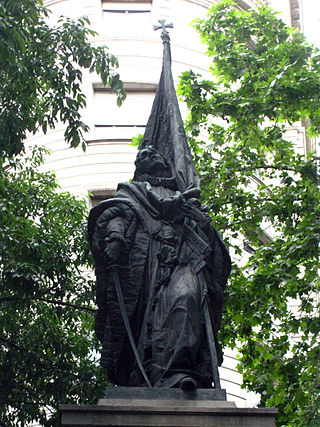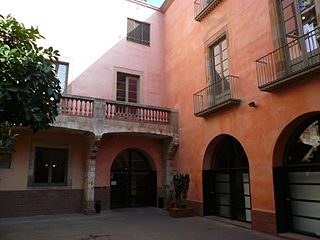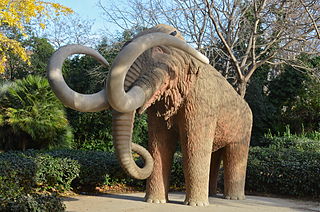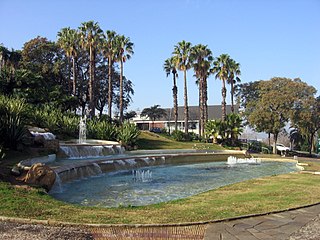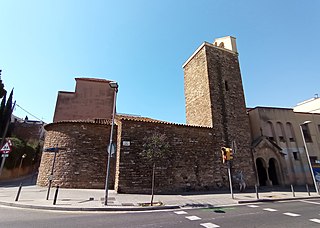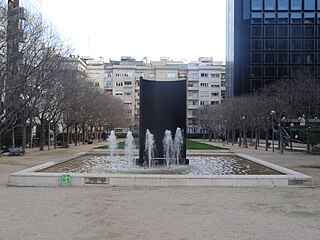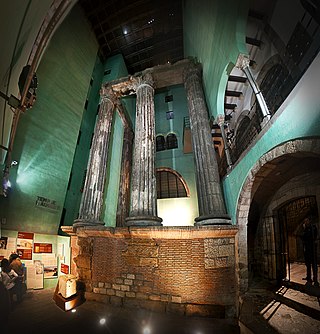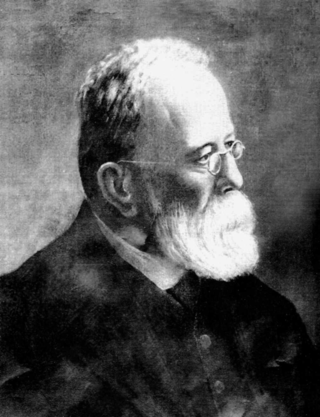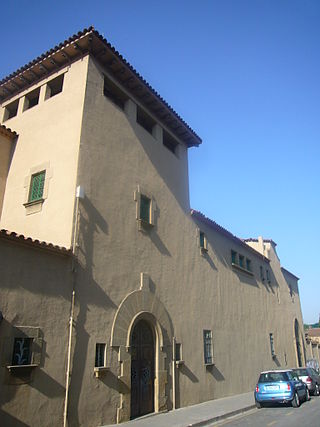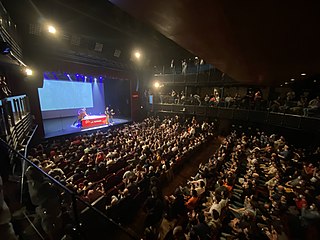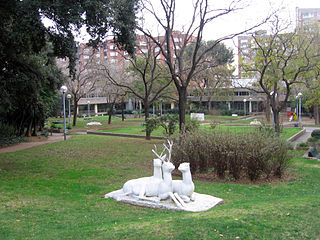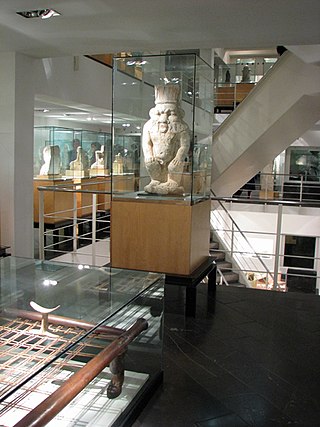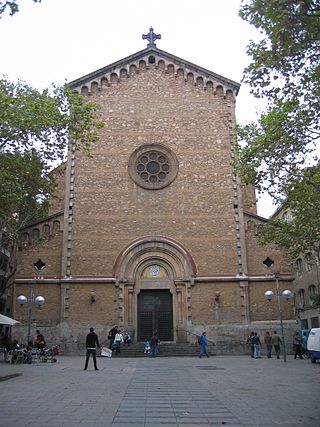100 Sights in Barcelona, Spain (with Map and Images)
Legend
Premium Sights
Book tickets, guided tours and activities in Barcelona.
Guided Free Walking Tours
Book free guided walking tours in Barcelona.
Explore interesting sights in Barcelona, Spain. Click on a marker on the map to view details about it. Underneath is an overview of the sights with images. A total of 100 sights are available in Barcelona, Spain.
Sightseeing Tours in BarcelonaActivities in Barcelona1. Palau Güell
The Palau Güell is a mansion designed by the architect Antoni Gaudí for the industrial tycoon Eusebi Güell, and was built between 1886 and 1888. It is situated on the Carrer Nou de la Rambla, in the El Raval neighborhood of Barcelona in Catalonia, Spain. It is part of the UNESCO World Heritage Site "Works of Antoni Gaudí".
2. Coliseum
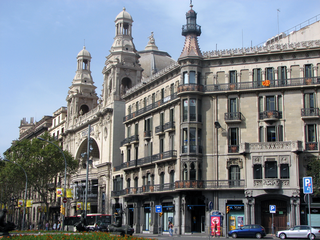
Coliseum or Cinema Coliseum is a theatre and cinema in Barcelona, located on 595–599 Gran Via de les Corts Catalanes, in the intersection with Rambla de Catalunya. It opened in 1923 and remains one of the biggest film theatres in the city as well of an iconic building of 1920s monumental architecture. The venue currently holds 1,700 people.
3. La Rambla
La Rambla is considered the most well known street in central Barcelona. A tree-lined pedestrian street, it stretches for 1.2 kilometres connecting the Plaça de Catalunya in its center with the Christopher Columbus Monument at Port Vell. La Rambla forms the boundary between the neighbourhoods of the Barri Gòtic to the east and the El Raval to the west.
4. Roman Wall
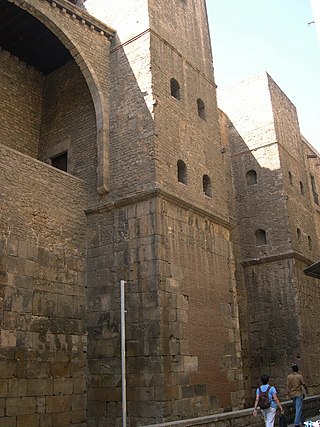
The Roman wall of Barcelona is a work declared a cultural asset of national interest. From Plaça Nova, it went along the Avenida de la Catedral, the streets of the Tapineria and the Subsent Navarro, the Plaza de los Traginers, and the streets of Email, Regomir, Avignon, Baths new, and La Palla.
5. Spotify Camp Nou
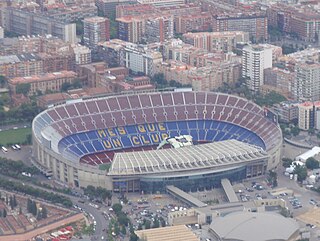
Camp Nou, branded as Spotify Camp Nou for sponsorship reasons, is an under-renovation stadium home of La Liga club Barcelona since its opening in 1957. With a planned seating capacity of 105,000, it will be the stadium with the largest capacity in Spain and Europe, and the second largest football stadium in the world.
6. National Art Museum of Catalonia
The Museu Nacional d'Art de Catalunya, abbreviated as MNAC, is a museum of Catalan visual art located in Barcelona, Catalonia, Spain. Situated on Montjuïc hill at the end of Avinguda de la Reina Maria Cristina, near Pl Espanya, the museum is especially notable for its outstanding collection of romanesque church paintings, and for Catalan art and design from the late 19th and early 20th centuries, including modernisme and noucentisme. The museum is housed in the Palau Nacional, a huge, Italian-style building dating to 1929. The Palau Nacional, which has housed the Museu d'Art de Catalunya since 1934, was declared a national museum in 1990 under the Museums Law passed by the Catalan Government. That same year, a thorough renovation process was launched to refurbish the site, based on plans drawn up by the architects Gae Aulenti and Enric Steegmann, who were later joined in the undertaking by Josep Benedito. The Oval Hall was reopened for the 1992 Summer Olympic Games, and the various collections were installed and opened over the period from 1995 to 2004. The Museu Nacional d'Art de Catalunya was officially inaugurated on 16 December 2004. It is one of the largest museums in Spain.
7. Pis-Museu Casa Bloc
The Casa Bloc is a residential building built between 1932 and 1936 in the Sant Andreu district of the city of Barcelona. Its architects were Josep Lluís Sert (1902–1983), Josep Torres Clavé (1906–1939) and Joan Baptista Subirana (1904–1978), all members of GATCPAC (Catalan Group of Architects and Technicians for the Progress of Contemporary Architecture). Catalan architects of the Second Republic, brought together by the GATCPAC, proposed a new way of living that was just, accommodated co-existence and defended the collective identity. The creation of Casa Bloc was one of the first steps towards dignifying workers' living conditions. As a result of the Spanish Civil War, the project was cut short. In 2012, after a careful restoration by the Institut Català del Sòl and Institut de Cultura of Barcelona through the Disseny Hub Barcelona, the doors to apartment number 1/11 are open and furnished just as its creators had originally wanted.
8. Museu del Modernisme Català
The Museu del Modernisme Català (MMCAT) – also known as the Museu del Modernisme de Barcelona (MMBCN) – is a museum opened in 2010 and dedicated entirely to Catalan modernism. It occupies the thousand square meters divided into two floors of a modernist building, from 1902 and 1904, by the architect Enric Sagnier, on Carrer de Balmes 48, Barcelona, between Diputació and Consell de Cent. Initially, before being a museum, the building was a warehouse of the textile company Fabra & Coats. It shows 350 works, including paintings, sculptures, furniture and stained glass, by 42 artists representative of this artistic movement. The vast majority of the works come from the private collection of the Pinós-Guirao family, and many are unpublished. You can find pieces by Antoni Gaudí, Joaquim Mir, Hermen Anglada Camarasa, Ramon Casas and Santiago Rusiñol. It is the first Museum of Catalan Modernism open to the world.
9. Parc del Turó de la Peira
The park on Turó de la Peira, located on the hill of the same name, extends over an area of 7.71 hectares that were part of an old quarry owned by the Marchioness of Castellbell. The space passed into municipal hands during the Second Republic and was declared a public park. However, on this land a group of houses was still built by the developer Romà Sanahuja Bosch, the same one that would later build the Diagonal block, and which today forms the heart of the neighborhood of the same name, and a religious school of the sisters of the Sacred Heart. With the arrival of the transition, the still undemocratic city council began the adaptation of the park itself, last work of the great master Nicolau Maria Rubió i Tudurí. Its maximum height is 138 meters above sea level on an esplanade with a large iron cross from where you can enjoy good views of the north of the city of Barcelona between the sea and Collserola.
10. Mina Grott
The Grott Mine is a tunnel, almost a kilometer and a half, located in the municipality of Barcelona, which connects the Vallvidrera reservoir with the lower part of the Vallvidrera neighborhood, near the lower station of the Vallvidrera Funicular. The lower mouth – abandoned – is to the left of the tracks of the Funicular de Vallvidrera, in the shortcut of Vallvidrera, s/n of Barcelona, bordering on the left the Montserrat school, going up the stairs, halfway between the lower railway station and the "carretera de les aigües". Its construction was carried out in 1855, to bring water from the reservoir to the old municipality of Sarrià. Until 1927 the use of the pipeline to bring water to Sarrià is documented. In 1940, the Sant Cugat del Vallès water company installed a pipeline to bring water from Barcelona to Sant Cugat. Later, the Sabadell water company also took advantage of the work.
11. Mont Tàber
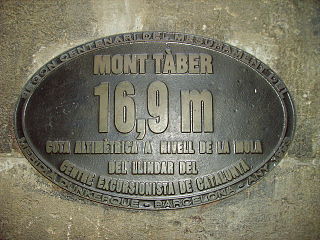
Mont Tàber is a hill located in the Gothic Quarter of Barcelona, 16.9 m above sea level, and which was home to the first Roman settlement of the new Barcino. It is difficult to perceive by the buildings of the city, but the slope of some streets allows us to notice the difference in level between the Roman city, located on the hill, and the lower surrounding lands such as the descent of the Llibreteria, the descent of Santa Eulàlia or the stairs of the Pla de la Catedral. Its summit is marked by a millstone on Paradís street, in front of the headquarters of the Centre Excursionista de Catalunya. Inside this building there are also the preserved columns of the temple of Augustus, vestige of Barcino. Despite the Roman appearance, it is a modern toponym, first documented in the Middle Ages and transported from the biblical Mount Tabor.
12. Una Habitació on sempre Plou
A room where it always rains is a sculptural group located in the Plaza del Mar in Barcelona, in front of the beach of San Sebastián. Work of the Madrid artist Juan Muñoz, opened on July 21, 1992, a few days before the inauguration of the Olympic Games. It consists of a cage inspired by the umbrella of Ciutadella Park, where there are five human bronze figures with their eyes closed, and instead of legs they have a spherical base. The trellis gazebo is trapped under three large trees, which are integrated as another part of the work. The artist's idea was for a irrigation system to rain permanently, but due to technical difficulties it was not installed. In 2004 it was dismantled to build a car park, and settled again on a marble floor half a meter above the original.
13. Jardins de les Tres Xemeneies
The gardens of the Three Chimneys are a green area in the Barcelona neighborhood of Poble Sec. This garden occupies part of the space where the old power plant of Barcelona was located, Traction, Light and Power Company, limited, popularly known as La Canadenca. The gardens are named after the three chimneys dating from 1897, 1908 and 1917 that were part of the power plant and are still preserved on one side of the garden. These are the most characteristic element of the old power plant and the current park and are an example of the industrial architecture of the nineteenth and early twentieth centuries. Scattered throughout the park are fragments of the machinery of the former electricity production company La Canadenca, now converted into works of public art.
14. Homenatge als castellers
Homage to the Castellers is a monument dedicated to the castellers by the Catalan sculptor Antoni Llena i Font. It is located in Plaça de Sant Miquel in Barcelona, in the Gothic Quarter, a square near the Casa de la Ciutat, headquarters of Barcelona City Council, and Plaça de Sant Jaume, where castles traditionally stand. It was made between 2010 and 2011 and was inaugurated on February 12, 2012 during the Festival of Santa Eulàlia. This is the third casteller monument in Barcelona, together with the sculpture by Francesc Anglès and Garcia Pom de dalt (1995), located in the Traumatology and Rehabilitation Unit of Vall d'Hebron University Hospital, and the Castellers de Sants monument (2011), located in Plaça de Bonet i Muixí, in the Sants neighbourhood.
15. Font de Sant Ramon
The Font de Sant Ramon is a source of non-potable water within the limits of the Collserola Natural Park. It is 300 meters above sea level, in the area of Santa Maria de Vallvidrera, just below Villa Molitor. Its name comes from the owner of the land where it is located, when it was built. The fountain is composed of several elements that make it a large construction. Above all there is an exposed brick house, where there is a mosaic with the image of the saint. The house is topped with a vaulted roof, also made of brick. Under the hut is the mine, closed by an iron gate. From the mine comes a copper tube through which the water flows, which ends up in a small pond with central stones. To access the pond and the spring there are about five stone steps.
16. Museum of Funeral Carriages
The collection of funeral floats shows what the funeral ritual was like in Barcelona from the end of the eighteenth century to the fifties of the 20th century. Through a set of 13 funeral floats, all of which are original, 6 accompaniment cars and 3 motor funeral cars, the collection deals with the appearance of funeral floats, which were closely linked to the evolution of history From Barcelona, its function, the different types that existed, all the ornaments that decorated them and the great role they had in the funeral ritual of the time. Different graphic examples of great burials of illustrious characters, such as among others that of Santiago Rusiñol, Enric Prat de la Riba and Enrique Tierno Galván, accompany the exhibition of funeral floats.
Wikipedia: Col·lecció de Carrosses Fúnebres (CA), Facebook, Twitter
17. Laboratori de Natura
The Nature Laboratory is one of the four sites of the Natural Sciences Museum of Barcelona. It is located in the Castell dels Tres Dragons building in the Parc de la Ciutadella and houses the zoology collections, to which will be added the geology collections of the Martorell Museum. It is a facility that brings together the scientific functions dedicated to documenting and increasing the understanding of the natural world. These functions are specified in the conservation of the heritage of reference collections of natural and documentary sciences, in the research and study of natural cultural heritage, and in the publication of reference works. It also houses the Natura Sonora sound library, the documentation centre and a specialised library.
18. Cosmocaixa
CosmoCaixa Barcelona is a science museum located in Barcelona, Catalonia, Spain. Formerly known as the Science Museum of Barcelona, it closed for renovations in 1998 and reopened in 2004 under its current name. The museum features a variety of exhibitions, permanent and temporary, that showcase the environment, nature, science, and space. CosmoCaixa also has a planetarium and exhibitions devoted to interaction such as touch and play for small children. It also has a bookstore, gift shop, library, teaching center and cafe. The museum is sponsored by la Caixa—Spanish banking foundation. Entry to the museum is free for students under 16. Adults too can enjoy at the museum with an entry ticket of 6 euros.
19. Turó de la Rovira
Turó de la Rovira is a hill overlooking Barcelona with an altitude of 262m. It has been continually occupied, in one form or another, from the Iberian era to present. During the Spanish Civil War (1936–1939) the Republican anti-air defence authority (DECA) found that the hill was the most suitable place to build its anti-aircraft battery, which was instrumental in republican efforts to defend Barcelona. Post Spanish Civil-War the then abandoned military structures were used as shelters and the shanty town of Els Canons, which survived into the ‘90s, sprung up around them. Also during this time, water tanks and communication towers were installed, some of which can still be seen to this day.
20. Barcelona a Prim
Barcelona a Prim is a sculptural monument located in the Parc de la Ciutadella in Barcelona, in the Ciutat Vella district. It was created in 1887 with an architectural design by Josep Fontserè i Mestre, while the sculptural part was in charge of Lluís Puiggener. When the original work was destroyed in 1936, it was replaced in 1948 by another designed by Frederic Marès. The monument is dedicated to the Catalan soldier and politician Joan Prim i Prats, President of the Council of Ministers of Spain and one of the architects of the Revolution of 1868. This work is inscribed as a Cultural Asset of Local Interest (BCIL) in the Inventory of Catalan Cultural Heritage with the code 08019/870.
21. Parc de Joan Reventós
Joan Reventós Park is a public park located in the Sarrià district, Sarrià - Sant Gervasi district of Barcelona (Catalonia), between the streets of Ràfols, Riera de les Monges and Ronda de Dalt. It is born from the urbanization of what is popularly known as the Torrent de les Monges, which owes its name to the convent of the Nuns of the Sacred Heart of Sarrià that crosses it. It is a green space that has two entrances and has 20,091 square meters of native vegetation, walkways and a children's play area. It was mostly built in 2008 and opened on Sunday 17 May 2009. It connects the historic centre of Sarrià with the Ronda de Dalt, Can Sentmenat and the Collserola natural park.
22. Botanical garden of Barcelona
The Botanical Garden of Barcelona is a botanical garden in the Montjuïc hill of Barcelona set amongst a number of stadiums used in the Summer Olympic Games of 1992. Although a botanical garden had been established in Barcelona as early as 1888, the current gardens date from 1999. It should not be confused with the Historical Botanical Garden of Barcelona founded in 1930 and reopened in 2003, also located in Montjuïc. Both botanical gardens, the Historical Botanical Garden of Barcelona and the Botanical Garden of Barcelona, are administrated by the Botanical Institute of Barcelona, which is one of the four institutions that constitute the Museum of Natural Sciences of Barcelona.
23. Turó de la Peira
The Turó de la Peira or Montadell is a hill in Barcelona, in the district of Nou Barris; between the old municipalities of Sant Andreu de Palomar and Sant Joan d'Horta and between the old streams of Horta and Parellada. On its slopes rise the neighborhoods of Can Peguera and Turó de la Peira. The name comes from Ca la Peira, a farmhouse that existed between the stream of Horta and the torrent of can Mariner. In 1936 the Turó de la Peira park was inaugurated, and in 1947 the surrounding blocks of houses began to be built. At the top of the hill there is a large iron cross and a viewpoint from where there is a panoramic view of Barcelona.
24. Turó del Carmel
The Turó del Carmel or Turó d'en Móra is a mountain of 289 meters in the municipality of Barcelona, in the region of Barcelonès. In the past, it was known as the Turó d'en Móra, referring to Can Móra, which was where the Coll district is today. The current name of the hill comes from the name of the sanctuary located on the eastern slope, built in the mid -19th century. In 1875, the first turrets on the hill began to be built, and with the passage of time originated the Carmel district. Currently, only the highest part of the hill is not urbanized, and is where the Parc Güell, the Carmel Park and the Juan Ponce Gardens are located.
25. Mare de Déu dels Desemparats
The Mare de Déu dels Desemparats is the parish church of the Torrassa neighbourhood in the city of L'Hospitalet de Llobregat (Barcelonès), protected as a cultural asset of local interest. The parish church, dedicated to Our Lady of the Forsaken, was built by Manuel Puig Janer between 1942 and 1949. There used to be a provisional temple designed by the architect Josep Maria Sagnier i Vidal from 1935 that was burned at the beginning of the Spanish Civil War. The bishop of Barcelona, Gregorio Modrego, blessed the new church on April 24, 1949, although the work was not definitively completed until 1951 with the erection of the bell tower.
Wikipedia: Mare de Déu dels Desemparats (l'Hospitalet de Llobregat) (CA)
26. Cascada del Parc de la Ciutadella
The Parc de la Ciutadella waterfall, also known as the Great Cascade or Monumental Waterfall, is an architectural and sculptural complex with fountains and water fountains in the Parc de la Ciutadella in Barcelona, listed as a cultural asset of local interest. It was built between 1875 and 1888 according to a general design by Josep Fontserè i Mestre, while the hydraulic project was the work of Antoni Gaudí, and its sculptural elements involved Rossend Nobas, Venanci Vallmitjana, Eduard B. Alentorn, Francesc Pagès i Serratosa, Josep Gamot, Manuel Fuxà, Joan Flotats and Rafael Atché. It was restored in 1956, 1972, 1989 and 2009.
27. Jardins de Can Xiringoi
The Jardins de can Xiringoi are a green area of about 7,000 square meters in the Torre Llobeta district of Barcelona. This space is located within the old enclosure of the Bourbon depot. The gardens are located between Costa i Cuixart, Felip II and Avinguda dels Quinze streets and connect Plaza Carmen Laforet with Avenida de los Quinze. It consists of a central plaza with a series of wooded grass flowerbeds, rest areas and an exercise area for the elderly. Some of the tree species that we can find in these gardens are: Acer freemanii, Jacaranda mimosifolia, Melia azederach, Quercus robur, Tipuana tipu and Washingtonia robusta.
28. Jardins de Portola
The Gardens of Portolà are a paradigmatic garden of the bourgeois towers of the modernist period in Barcelona in the district of Sarrià-Sant Gervasi. They are of a small area of 626 m². Opened in 2005, the gardens are located in the Putxet district, behind Avenida de la República Argentina between Portolà streets no. 6 and Claudi Sabadell occupying the leisure of the patio of the modernist -style tower, Vila Matilde, built in 1910. These are lands that were then owned by the Terratinent Casimir de Gomis and his wife Rosa de Portolà, which goes To be the one that named the street and the gardens.
29. Elogi de l'aigua
Praise of the water is a sculpture from 1987 by Eduardo Chillida located in the Parc de la Creueta del Coll in Barcelona. It is a solid piece of reinforced concrete from which four arms come out that are suspended by four steel cables on a pond. It weighs 54 tons and measures 12 meters high by 7.2 long and 6.5 meters wide. The work is located in an old quarry, in one of the urbanized areas on the occasion of the 1992 Summer Olympic Games, whose walls delimit and host the monument. This sculpture was installed in the same year that the artist received the Prince of Asturias Award for the Arts.
30. Jardins de Mercè Rodoreda
The Mercè Rodoreda gardens are an urban park located between Avinguda de la República Argentina, Baixada de Blanes and Carrer de la Costa, in the El Putget i Farró neighbourhood of Barcelona. They were inaugurated in 2008 to commemorate the centenary of the birth of the writer Mercè Rodoreda. Located on a fairly steep terrain, between the hill of El Puget and the stream of Vallcarca, the gardens contain typically Mediterranean species such as holm oaks, stone pines, marfull, palmettoes, almond trees, among other ornamental species such as cedars, mimosas and palm trees.
31. Jardins de Winston Churchill
The Winston Churchill Gardens is an urban park located on the lower corner of the intersection of Via Augusta, 257 and Ronda del General Mitre, 69-71, in the district of Sarrià-Sant Gervasi, and, more specifically, in the Les Tres Torres district of Barcelona (Barcelonès), very close to the Ferrocarrils de la Generalitat (FGC) station of Les Tres Torres. The gardens were opened on 15 December 2012. With a total area of 0.07 hectares and a triangular shape, it contains lawn flowerbeds, areas of gravel and hard pavement, complemented by wooden benches.
32. Monestir de Santa Maria de Valldonzella
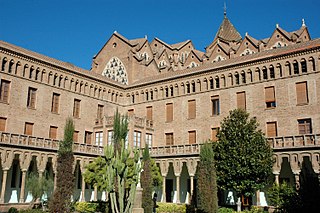
Santa Maria de Valldonzella is a Cistercian female monastery currently located in Barcelona, in Sant Gervasi de Cassoles, near the site of the former royal residence of Bellesguard and current Bellesguard tower. Over the centuries, for various reasons, the community has been itinerant, having had to move four times always to the edge of Barcelona. The current monastery, located on Cistercian street, is the work of the architect Bernardí Martorell i Puig, in neo-Gothic modernist style. It is a work protected as a Cultural Asset of Local Interest.
33. Baluard de Migdia i Muralla de Mar
The bastion of Migdia is one of the eleven bastions that had the medieval and modern wall of Barcelona until the set of the city walls was demolished in the nineteenth century. The Baluard de Migdia was the scene of several episodes in the history of Barcelona, highlighting among them the violent battles that took place during the eleventh of September 1714. The bastion was rediscovered in 2007, next to Francia Station and Barceloneta Station, and its current remains are part of the architectural and historical heritage of the city of Barcelona.
34. El Molino
El Molino is a café-concert in Barcelona, one of the most renowned in Europe during much of the twentieth and nineteenth centuries, and has always been considered a space transgressive of the limits allowed, with a great capacity to create its own two-way languages, with the mobile to escape the censorship of each era. With its characteristic red mill blades on the façade, it was the most famous of the theatres on Paral·lel, an avenue that came to be baptised as "the theatre street of Europe", due to its large concentration of scenic spaces.
35. Teatre Lliure
The Palau de l'Agricultura is a group of buildings built for the 1929 Barcelona Universal Exposition. It is located right on the border of the Subarrio de la Francia Xica and the Parc de Montjuïc. Formed by several bodies, this group of buildings occupies the corner between Paseo de Santa Madrona and Calle de Lleida, articulating its volumes around a central courtyard today known as Plaza de Margarida Xirgu. At present, only half of the original buildings have been preserved. It is a work protected as a Cultural Asset of Local Interest.
36. Jardins del Doctor Pla i Armengol
The gardens of Doctor Pla i Armengol are located in the Horta-Guinardó district of Barcelona. They are located on a formerly privately owned farm that housed the Ravetllat-Pla Institute, a tuberculosis research center founded in 1919 by Dr. Ramon Pla i Armengol and the veterinarian Joaquim Ravetllat i Estech. The house and gardens of the estate, in the noucentista style, were designed in 1930 by the architect Adolf Florensa. The gardens were opened to the public in 2019, with the house converted into the Núria Pla Museum.
37. Monument a Frederic Soler (Serafí Pitarra)
In Frederic Soler it is a sculptural monument located in the Pla del Teatre de Barcelona, in the district of Ciutat Vella. It was created in 1906 with an architectural design by Pere Falqués, while the sculptural part was by Agustí Querol. The monument is dedicated to the Catalan playwright Serafí Pitarra, pseudonym Frederic Soler i Hubert, considered the founder of Catalan theater. This work is registered as a Cultural Asset of Local Interest (BCIL) in the Inventory of Catalan Cultural Heritage with the Code 08019/1012.
38. Palau Reial de Pedralbes
The Royal Palace of Pedralbes is a building placed in the middle of an ample garden in the district of Les Corts, in Barcelona. From 1919 until 1931 and since 1975 it has been the official residence for the Spanish royal family when they visit the city, although they currently prefer the Palace of Albéniz. It also houses the Ceramic Museum, the Textile and Clothing Museum and the Decorative Arts Museum, both part of the Disseny Hub Barcelona and is the permanent seat of the Union for the Mediterranean (UfM).
39. Castell de Port
The castle of Port is a ruined castle located southwest of the Montjuïc mountain. It was a very important defensive structure of Barcelona from the 11th century until the second half of the 15th century. It is one of the most unknown structures of the city despite its strategic and control importance. Its strategic value was associated with its feature of Atalaia within the road network that during this period related the city of Barcelona to the neighboring villages, especially those of the Llobregat Delta.
40. Jardins de Joan Brossa
The Joan Brossa Gardens are located in Barcelona, on the Montjuïc mountain, at the bottom of the space where the Montjuïc Amusement Park was previously opened, opened in 1966 and closed in October 1998. The gardens go To be opened in 2003 and are named after the poet Joan Brossa i Cuervo. They occupy a space of 5.2 hectares of Mediterranean forest, of which 3.8 are green. They are interconnected with the gardens of Mossèn Cinto Verdaguer and the gardens of the old shooting camp on the flight.
41. Santa Creu d'Olorda
The Santa Creu d'Olorda is a hermitage and also receives this name from the enclave where it is built, which administratively belongs to the district of Sarrià-Sant Gervasi in the municipality of Barcelona, but slightly separated from the rest of the municipality. The place is located in the heart of the Collserola mountain range surrounded by some of its peaks such as Puig d'Olorda, Turó Rodó, Turó del Xai. In the enclave there is also the Castle of Olorda and the Pedrera dels Ocells.
42. La Torre del Rellotge
The Clock Tower is a building in the municipality of Barcelona protected as a cultural asset of local interest. The building known as the Clock Tower is an old lighthouse built in 1772 and transformed into a clock in 1911. This emblematic element is located on the Moll dels Pescadors in Barcelona, in the Barceloneta neighborhood. It is configured as a structure formed by a square base -as a basement- and a foot of great height that is finished with a square body where the clock is located.
43. Poble Espanyol
The Poble Espanyol is an open-air architectural museum in Barcelona, Catalonia, Spain, approximately 400 metres away from the Fountains of Montjuïc. Built for the 1929 Barcelona International Exposition, the museum consists of 117 full-scale buildings replicated from different places in the Iberian Peninsula, joined forming a small town recreating urban atmospheres of disparate places in Spain. It also contains a theater, restaurants, artisan workshops and a museum of contemporary art.
44. Park Guell
Park Güell is a privatized park system composed of gardens and architectural elements located on Carmel Hill, in Barcelona, Catalonia, Spain. Carmel Hill belongs to the mountain range of Collserola – the Parc del Carmel is located on the northern face. Park Güell is located in La Salut, a neighborhood in the Gràcia district of Barcelona. With urbanization in mind, Eusebi Güell assigned the design of the park to Antoni Gaudí, a renowned architect and the face of Catalan modernism.
45. Font Carmen Amaya
The Carmen Amaya Fountain is a sculptural fountain in Barcelona, Spain, located in Plaça de Brugada, in the Barceloneta neighborhood. It was made by the sculptor Rafael Solanic and inaugurated, in the presence of the honoree herself, on February 14, 1959. The initiative corresponded to the journalist Josep Maria Massip and the location is due to the fact that next to that area was the Somorrostro, a neighbourhood of barracks where the Barcelona dancer Carmen Amaya was born and raised.
46. Almeria Teatre
Golem'S, historically Almeria Teatre, is a theatre hall in Barcelona, located at 64 Sant Lluís Street, in the Gràcia neighbourhood. It is a multipurpose space that has a stage, stalls and amphitheater with capacity for 183 spectators. The hall was reopened on December 18, 2009 and recovered a disused cultural space, the theater of the old Casa de Almería, founded in the district of Gràcia in 1960 and which, in the early seventies, became one of the bingos of Barcelona.
47. Jardí d'Escultures
The Sculpture Garden is located on Montjuïc Mountain, in the Sants-Montjuïc district of Barcelona, attached to the Joan Miró Foundation. It was built in 1990 with an architectural project by Jaume Freixa and Jordi Farrando, and in 2002 it was rebuilt by Marina Salvador. It contains works by sculptors such as Tom Carr, Pep Duran, Perejaume, Enric Pladevall, Jaume Plensa, Josep Maria Riera i Aragó, Cado Manrique, Ernest Altès, Gabriel Sáenz Romero and Sergi Aguilar.
48. Barcelona Museum of Contemporary Art
The Barcelona Museum of Contemporary Art is a contemporary art museum situated in the Plaça dels Àngels, in El Raval, Ciutat Vella, Barcelona, Catalonia, Spain. The museum opened to the public on November 28, 1995. Previous directors include Daniel Giralt-Miracle (1988–1994), Miquel Molins Nubiola (1995–1998), Manuel J. Borja-Villel (1998–2007), Bartomeu Marí (2008-2015), and Ferran Barenblit (2015-2021), while the current director is Elvira Dyangani Ose.
Wikipedia: Barcelona Museum of Contemporary Art (EN), Website
49. Parc del Torrent Maduixers
Torrent Maduixer Park is located in the Sant Gervasi - La Bonanova neighbourhood, in the Sarrià-Sant Gervasi district of Barcelona. It is located in the foothills of the Collserola mountain range, next to the Ronda de Dalt. This park, created in 2013, was conceived with criteria of self-sufficiency and sustainability, one of the basic premises in the creation of green areas in Barcelona today, such as the parks of Can Rigal, de la Primavera and Rieres d'Horta.
50. Teatre Tívoli
The Teatre Tívoli is a performance hall in Barcelona dedicated to theatre and cinema, at carrer de Casp, núm. 8. It is one of the largest theaters in the city and in some periods of its history it has hosted performances of opera and zarzuela, as well as musical works, even seeing the world premiere or premiere in Barcelona of some important works of the genre, as well as Catalan theater. The building is protected as a Cultural Asset of Local Interest.
51. A Joan Güell i Ferrer
A Joan Güell i Ferrer is a sculptural monument located on Gran Via de les Corts Catalanes with Rambla de Catalunya, in the Eixample district of Barcelona. Created in 1888, it was the work of the architect Joan Martorell and the sculptors Rossend Nobas, Torquat Tasso, Eduard B. Alentorn, Maximí Sala and Francesc Pagès i Serratosa. Destroyed in 1936, it was rebuilt by the architect Joaquim Vilaseca i Rivera and the sculptor Frederic Marès in 1945.
52. The Kiss of Death
The Kiss of Death is a marble sculpture located in Poblenou Cemetery in Barcelona. The sculpture is believed to have been crafted by Jaume Barba in 1930, as his signature is present on the side of the sculpture. However, some suggest that it might have been designed by Barba's son-in-law, Joan Fontbernat. The sculpture serves as an example of memento mori, portraying death as a winged skeleton bestowing a kiss on the forehead of a young man.
53. Fossar de les Moreres
The Fossar de les Moreres is a memorial square in Barcelona, adjacent to the basilica of Santa Maria del Mar. The plaza was built over a cemetery where defenders of the city were buried following the Siege of Barcelona at the end of the War of the Spanish Succession in 1714. The plaza features a memorial to the fallen Catalans of the war, with a torch of eternal flame and a heroic poem by Frederic Soler, "El Fossar de les Moreres".
54. Parc de la Barceloneta
Parc de la Barceloneta is located in Barcelona's neighbourhood of the same name, bounded by Carrer del Doctor Aiguader and Carrer del Gas, and the Passeig Marítim de la Barceloneta and Salvat Papasseit. The metal structure of the gasometer, designed by the engineer Claudi Gil i Serra in 1868, remains of the old Catalana de Gas factory, as well as the water tower and office building, listed as a cultural asset of local interest.
55. Columbus Monument
The Columbus Monument is a 60 m (197 ft) tall monument to Christopher Columbus at the lower end of La Rambla, Barcelona, Catalonia, Spain. It was constructed for the Exposición Universal de Barcelona (1888) in honor of Columbus' first voyage to the Americas. The monument serves as a reminder that Christopher Columbus reported to Queen Isabella I and King Ferdinand V in Barcelona after his first trip to the new continent.
56. The Fountain of Beauty
The Fountain of Beauty is a sculpture located in the Sants-Montjuïc district of Barcelona, in Plaza Dante. Designed by Josep Llimona in 1925, it was placed in the context of the urbanisation of Montjuïc mountain carried out for the celebration of the 1929 International Exposition. This work is registered as a Cultural Asset of Local Interest (BCIL) in the Inventory of Catalan Cultural Heritage with the code 08019/1756.
57. Ermita de Sant Cebrià
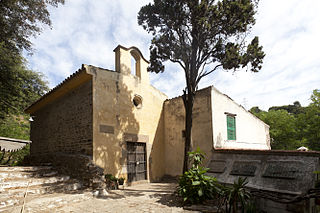
The Hermitage of Sant Cebrià i Santa Justina, also known as Sant Cebrià d'Horta, is a hermitage in the Montbau district of Barcelona. The hermitage is dedicated to the Christian martyrs of the third century, Saint Cyprian of Antioch and Saint Justina. The origins of the hermitage are not documented, but the form of construction suggests a pre-Romanesque era. It is a work protected as a Cultural Asset of Local Interest.
58. Parròquia de Sant Andreu de Palomar
The church of Sant Andreu de Palomar is located in the Sant Andreu de Palomar neighborhood, today included in the Sant Andreu district of Barcelona. The temple was built in the late nineteenth century. In 1991 he received the Creu de Sant Jordi together with the Casa Asil de Sant Andreu, created in 1866 and linked to the parish. It is a work included in the Inventory of the Architectural Heritage of Catalonia.
59. Font de les Tres Gràcies
The Font de les Tres Gracias is located in Barcelona's Plaça Reial, in the Ciutat Vella district. It was created in 1867 by Antoine Durenne on a design by Louis-Tullius-Joachim Visconti, and installed in 1876 with an architectural project by Antoni Rovira i Trias. This work is inscribed as a Cultural Asset of Local Interest (BCIL) in the Inventory of Catalan Cultural Heritage with the code 08019/646.
60. Turó Parc
Turó Parc is located in the Sarrià - Sant Gervasi district of the city of Barcelona. It is located in the middle of a large urban area and is one of the most visited places in the area. In municipal information it is officially called Turó Parc - Parc del Poeta Eduard Marquina, since they are gardens dedicated to the Catalan writer Eduard Marquina i Angulo. It is also known as Turó Park.
61. Església de la Mare de Déu de Gràcia i de Sant Josep
The church of the Verge de Gràcia and Sant Josep, popularly known as the Josepets de Gràcia, is the church of the former convent of the Discalced Carmelites of Santa Maria de Gràcia, located at the top of the modern Plaça de Lesseps in the district of Gràcia, in Barcelona, where it is the oldest building in the neighborhood. It is a work protected as a Cultural Asset of Local Interest.
62. Parc de Can Sabaté
Can Sabaté Park is located in the Marina de Port, in the Sants-Montjuïc district of Barcelona. It was built in 1984 with a project by Neus Solé, Imma Jansana and Daniel Navas, who had the advice of Nicolau Maria Rubió i Tudurí, former director of Parks and Gardens of Barcelona between 1917 and 1937, author of the Parc de Montjuïc together with Jean-Claude Nicolas Forestier in 1929.
63. Turó de la Creueta del Coll
The Turó de la Creueta del Coll is a mountain of 245 meters that is located in the municipality of Barcelona, in the region of Barcelonès. It is the one that is located further west. It is also known as Turó d'en Falcó, after the name of a nearby farmhouse, now disappeared. It is considered one of the seven hills of Barcelona, a figure taken in imitation of the seven hills of Rome.
64. Parc de la Primavera
Parc de la Primavera is located on Montjuïc Mountain, in the Sants-Montjuïc district of Barcelona. It was created in 2007 with a project by Patrizia Falcone. This park was conceived with criteria of self-sufficiency and sustainability, one of the basic premises in the creation of green areas in Barcelona today, such as the parks of Can Rigal, Torrent Maduixer and Rieres d'Horta.
65. Parc del Laberint d'Horta
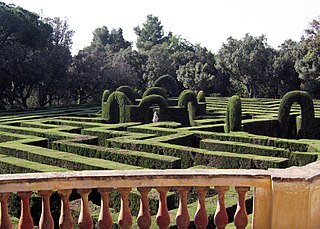
The Parc del Laberint d'Horta is a historical garden in the Horta-Guinardó district in Barcelona and the oldest of its kind in the city. Located on the former estate of the Desvalls family, next to the Collserola ridge, the park comprises an 18th-century neoclassical garden and a 19th-century romantic garden. On the lower terrace is the hedge maze that gives the park its name.
66. Monument a Bartomeu Robert
The Monument to Doctor Robert is a sculptural group today inside the Plaza de Tetuán in Barcelona, in the Eixample district. It is dedicated to Bartomeu Robert, Catalan doctor and politician, mayor of Barcelona between March and October 1899. The monument is considered a cultural asset of local interest (BCIL) in the Inventory of Catalan Cultural Heritage with code 08019/1598.
67. Jarrón con niños
The Children's Fountain, also known as Vase with Children, is a sculpture located in the Parc de la Ciutadella in Barcelona, in the Ciutat Vella district. Designed by Josep Reynés in 1893, it is one of the park's most popular sculptures. This work is registered as a Cultural Asset of Local Interest (BCIL) in the Inventory of Catalan Cultural Heritage with the code 08019/647.
68. Museum and Study Center of Sport Doctor Melcior Colet
The Museum and Study Center of Sport Doctor Melcior Colet is a facility dedicated to the promotion and exhibition of the most prominent in the development of the history of the sport in Catalonia in recent centuries. It is based in an Art Nouveau house built in 1911 by Josep Puig i Cadafalch the Casa Pere Company, which is located in Buenos Aires street, 56, Barcelona.
Wikipedia: Museum and Study Center of Sport Doctor Melcior Colet (EN)
69. Castell d'Olorda
The castle of Olorda, located in the Collserola mountain range near the Puig d'Olorda and the Pedrera dels Ocells, belongs to the municipality of Barcelona, it is a disappeared castle of uncertain location. Some sources place it at the very top of Puig d'Olorda. On the other hand, others identify it as the mansion located next to the hermitage of Santa Creu d'Olorda.
70. Jardins de Ca l'Alena
The gardens of Ca l'Alena are a public park of about 4000 square meters that is located inside the block of the so-called housing of La Capa, in the neighborhood of La Marina de Port, in the district of Sants-Montjuïc. Both Alena and Capa are names that come from public companies that between the 30s and 70s of the last century had a wood sawmill in this place.
71. Glorieta de la transsexual Sonia
The Glorieta de la Transsexual Sònia is a public space located in the Parc de la Ciutadella in Barcelona. Called Glorieta dels Músics, it was renamed in 2013 in memory of Sonia Rescalvo Zafra, a transsexual murdered by a fascist group of six neo-Nazi shaved heads in 1991. In the first five years after the premiere, the plate was stolen or damaged three times.
72. Jardins de Maria Baldó
The Maria Baldó gardens are a green space in the Vallcarca i els Penitents district of Barcelona, which together with the Manuel Blancafort gardens form part of the green corridor between Park Güell and the gardens of Turó del Putxet. They are dedicated to Maria Baldó, founder, in 1923, of the school for girls La Farigola, located in the same neighborhood.
73. Palace Hotel Barcelona
The Palace is a hotel in the city of Barcelona, formerly known as Hotel Ritz. The building, designed by the architect Eduard Ferrès, is located at Gran Via núm. 668 at the junction with c. Roger de Llúria. The former Ritz Hotel was founded in 1919, on the initiative of César Ritz. This new establishment was inspired by the Madrid hotels Palace and Ritz.
74. Parc del Carmel
Carmel Park is located in the Carmel district, in the Horta-Guinardó district of Barcelona. Located around the Carmel hill, which is part of the foothills of the Collserola mountain range, just next to Park Güell, from which it separates the Can Móra road, which divides between the districts of Horta-Guinardó and Gràcia, to which Park Güell belongs.
75. Jardins del Baix Guinardó
The gardens of Baix Guinardó, formerly known as the gardens of the Prince of Girona, are a green area located in the Baix Guinardó neighbourhood, between Taxdirt, Marina, Lepant and Travessera de Gràcia streets. Formerly these lands were occupied by the cavalry barracks of Girona, or Barracks of Girona, which ceased to have this function in the 80s.
76. Plaça del Sol
Plaça del Sol is a square in the Gràcia district of Barcelona framed horizontally by Carrer del Planeta and Carrer de Maspons, and vertically by Carrer del Canó, Carrer de la Virtut and Carrer de Xiquets de Valls. Unlike most squares in Gràcia, Plaça del Sol has kept its original name, although it was also popularly called Plaça dels Encants.
77. Parc de les Corts
Parc de les Corts is located in the Les Corts district of Barcelona. It has a total area of 0.71 hectares and is located between Calle Numancia and Nicaragua. The entrance to the park is completely free and is always open. It is surrounded by large blocks of buildings and stands out for the presence of a small artificial river that crosses it.
78. Far del Llobregat
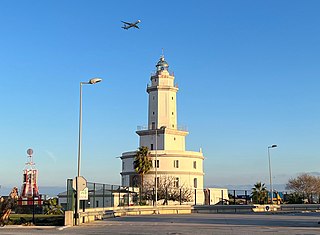
The Llobregat Lighthouse has been located in the municipality of Barcelona since 1920 where it was in the municipality of L'Hospitalet de Llobregat. It is a work protected as a cultural asset of local interest. The lighthouse is located on the left bank of the river Llobregat, north of its former mouth, currently within the Port of Barcelona.
79. Casa Museu Gaudí
The Gaudí House Museum, located within the Park Güell in Barcelona, is a historic home museum that houses a collection of furniture and objects designed by the Spanish architect Antoni Gaudí. It was the residence of Antoni Gaudí for almost 20 years, from 1906 till the end of 1925. On 28 September 1963 it opened as a historic home museum.
80. Jardins de Piscines i esports
The gardens of Swimming Pools and Sports are located in the Sarrià-Sant Gervasi district of Barcelona. Its origin lies in the homonymous sports complex inaugurated in 1935, which had formerly housed the Real Club de Polo. In 2008, part of which became a public garden, while in the rest of the land several sports facilities still remain.
81. Memorial Durruti, Ascaso, Ferrer i Guardia
José Buenaventura Durruti Dumange was a Spanish insurrectionary, anarcho-syndicalist militant involved with the CNT and the FAI in the periods before and during the Spanish Civil War of 1936–1939. Durruti played an influential role during the Spanish Revolution of 1936 and is remembered as a hero in and by the anarchist movement.
82. Palau de les Heures
El Palau de les Heures, també conegut com a Casa Gallart, és una casa senyorial amb un jardí que es troba al sud del turó de la Maria, a la serra de Collserola, al costat del camí que pujava a l'ermita de Sant Cebrià. Actualment està integrat al Campus de Mundet de la Universitat de Barcelona, al districte d'Horta-Guinardó.
83. Plaça de la Virreina
Plaça de la Virreina is a square in the Gràcia district of Barcelona located in an entrant in Asturias Street and Calle de l'Or, and accessible along Calle de la Iglesia, Calle de la Santa Creu and Calle Torrijos . Popularly, it is also known as the Plaça de Sant Joan, because it houses the eponymous parish of the 19th century.
84. Plaça de Rovira i Trias
Plaça de Rovira i Trias, also popularly known as Plaça dels Tres Senyors, is a square in the Gràcia district of Barcelona framed by Rabassa and Torrent de les Flors streets, and crossed by Carrer de la Providència. Since 1861 it bears the name of the architect who urbanised and parcelled out the area, Antoni Rovira i Trias.
85. Basílica de Santa Maria del Mar
Santa Maria del Mar is a church in the Ribera district of Barcelona, Catalonia, Spain, built between 1329 and 1383 at the height of Principality of Catalonia's maritime and mercantile preeminence. It is an outstanding example of Catalan Gothic, with a purity and unity of style that is very unusual in large medieval buildings.
86. Sant Gregori Taumaturg
The church of San Gregorio Thaumaturgo is a Roman Catholic church located in the square of the same name in the district of Sarriá-San Gervasio, in the city of Barcelona, Spain. It is consecrated to the third-century saint Gregory Thaumaturgus, one of the Fathers of the Church and bishop of Neocaesarea in Pontus Polemoniaco.
87. Teatre Apolo
The Apolo Theater is a theatrical space located at no. 59 Avinguda del Paral·lel in Barcelona, in the district of Poble-sec. The old Apolo was built in 1901 and, uninterruptedly until today, except during the COVID-19 Pandemic episode in Catalonia between 2020 and 2021, it has offered variety, music and theater shows.
88. Monument to Rafael Casanova
The Monument to Rafael Casanova is a sculpture commemorating the last chief minister of Barcelona. The monumental complex is currently located at the junction of Ronda de Sant Pere with Ali Bei and Girona streets, in the city of Barcelona. It is the work of the sculptor Rossend Nobas, and was manufactured in 1888.
89. Centre Cívic Pati Llimona
The Palau Marc or Gualbes is a building in the Gothic Quarter of Barcelona listed as a cultural asset of local interest. Since 1991, it has housed the facilities of the Pati Llimona Civic Centre, which has an exhibition hall, an archaeological space and several classrooms and rooms for workshops and conferences.
90. Mamut
The Mamut is a sculpture located in the Parc de la Ciutadella in Barcelona, near the monumental waterfall. Work of the Catalan sculptor Miquel Dalmau, was opened on December 12, 1907. Made in painted reinforced concrete, it represents a mammoth on a natural scale: 5.60 m high, 7.50 m long and 2.30 meters m wide.
91. Jardins del Mirador de l'Alcalde
The Mirador de l'Alcalde Gardens are located on Montjuïc mountain in Barcelona, taking advantage of the steep slope of the mountain near Montjuïc Castle. The Mirador de l'Alcalde is part of the Passeig dels Cims, a landscaping project to organise the upper reaches of Montjuïc, from Miramar to Carrer del Foc.
92. Mare de Déu del Coll
The Mare de Déu del Coll, or Font-rúbia, is a church in the Coll district of Barcelona, in the Gràcia district of Barcelona. It is a Romanesque church of the eleventh century, of which the central body and the bell tower are preserved, being the other current elements of the church of the twentieth century.
93. Jardins de Clara Campoamor
The Gardens of Clara Campoamor are an urban park located on Avenida Diagonal, 609-615, in the neighborhood of Les Corts of the city of Barcelona, were inaugurated on December 3, 1994, its total extension is just over half a hectare, they are dedicated in memory of the historical figure of Clara Campoamor.
94. Temple d'August
The Temple of Augustus in Barcelona was a Roman temple built during the Imperial period in the colony of Barcino. The temple was the central building on Tàber Hill, currently in Carrer del Paradís number 10, in the city's so-called Gothic Quarter. The dedication to Augustus is traditional, but unproven.
95. Anselmo Lorenzo
Anselmo Lorenzo Asperilla was a defining figure in the early Spanish Anarchist movement, earning the often quoted sobriquet "the grandfather of Spanish anarchism," in the words of Murray Bookchin: "his contribution to the spread of Anarchist ideas in Barcelona and Andalusia over the decades was enormous".
96. Parròquia de Sant Raimon de Penyafort
The monastery of Santa Maria de Montsió is currently in Esplugues de Llobregat, in the street of the Church, number 82. It is the headquarters of the community of Dominican nuns of closure. The congregation was founded in 1347 and, after several transfers, settled in the current headquarters in 1948.
97. Barts
The Gran Teatre Espanyol is a theatre located on Avinguda del Paral·lel, 62 in the city of Barcelona. Between 1892 and 1980, it operated under different names, and also as a cinema and nightclub. It is currently the Paral·lel 62 space and is part of the municipal project Cases de Cultura de Barcelona.
98. Jardins de Jaume Vicens i Vives
The Jaume Vicens i Vives gardens are located in the Les Corts district of Barcelona. They were created in 1967 with a project by Nicolau Maria Rubió i Tudurí, initially as a private garden, although in 1990 they were open to the public. They are dedicated to the historian Jaume Vicens i Vives.
99. Museu Egipci
The Egyptian Museum of Barcelona, located at 284 Valencia Street, belongs to the Clos Archaeological Foundation, a non -profit organization founded in 1992 by the businessman Jordi Clos i Llombart. Its aim is to promote and disseminate art in general and archeology, especially of ancient Egypt.
100. Església de Sant Joan
Sant Joan de Gràcia is an eclectic church built between 1878 and 1884 in Plaça de la Virreina in the Gràcia district of Barcelona, on the site of the palace garden or summer tower called La Virreina, built by Viceroy Manuel Amat. It is a work protected as a Cultural Asset of Local Interest.
Share
Disclaimer Please be aware of your surroundings and do not enter private property. We are not liable for any damages that occur during the tours.
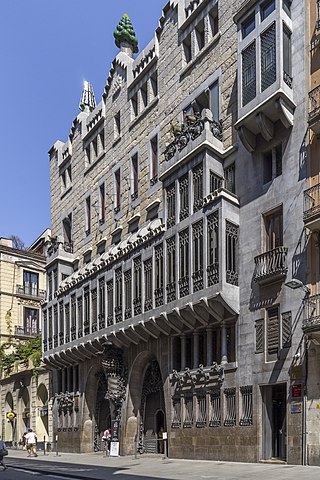
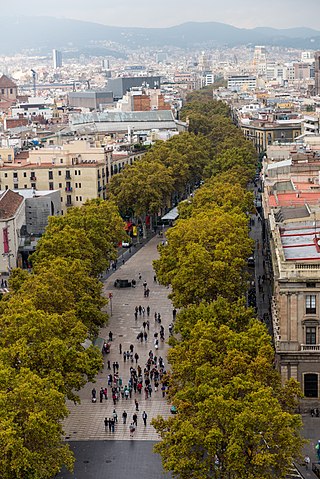
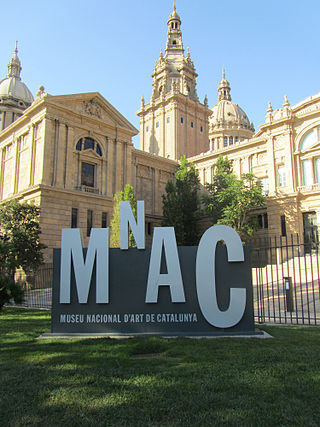
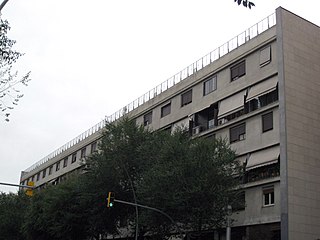
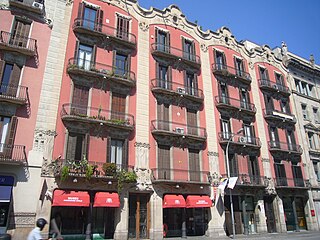
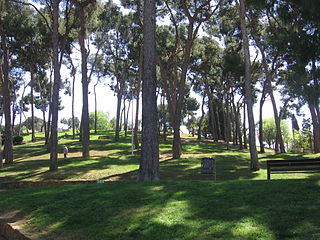
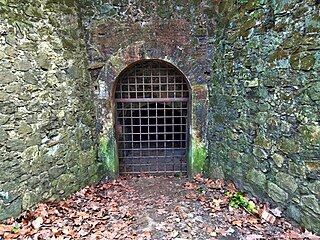
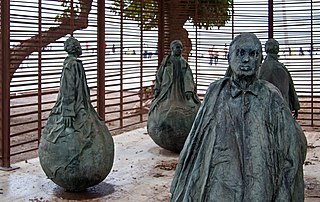
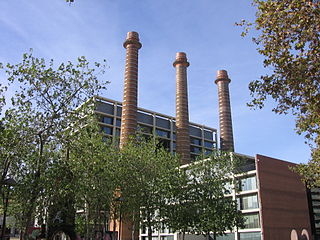
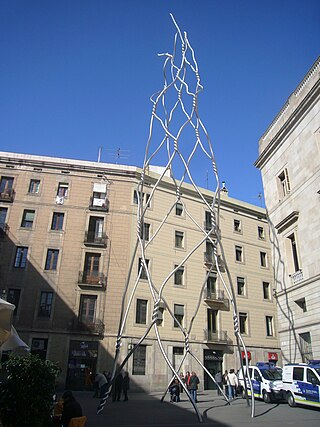
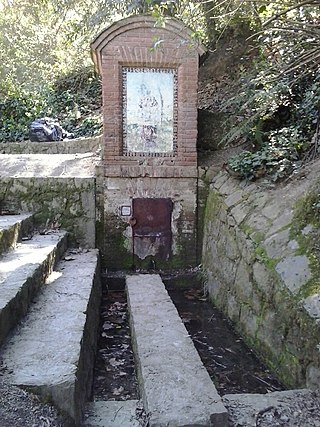
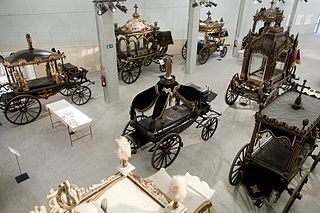
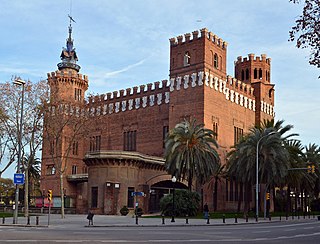
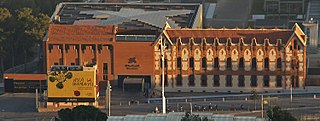
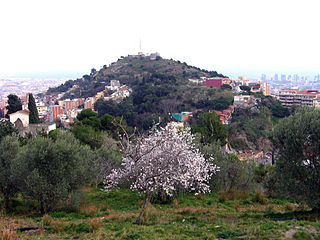
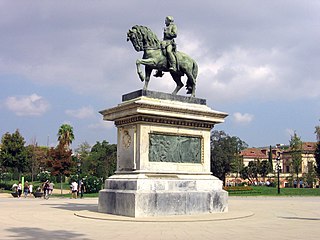
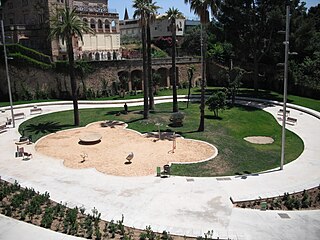
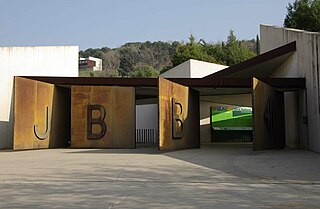
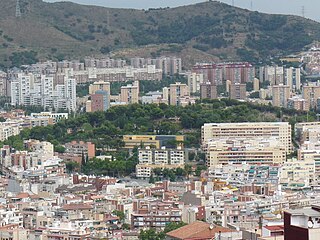
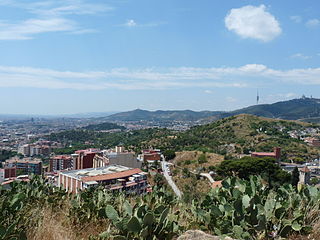
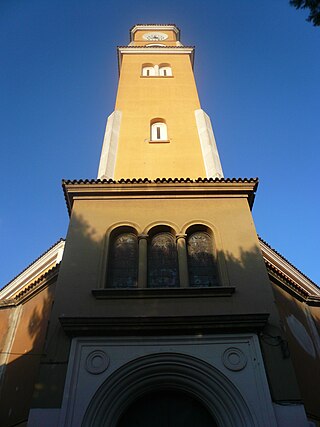
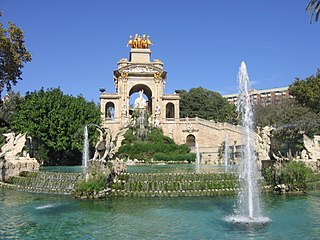
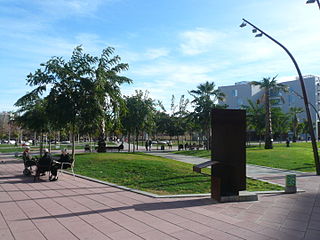
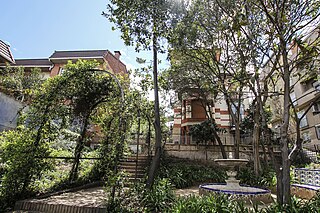
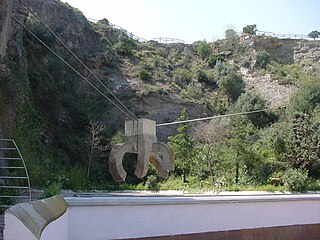
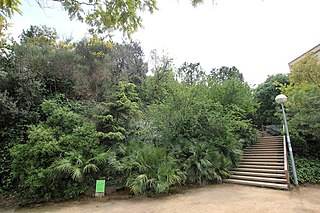
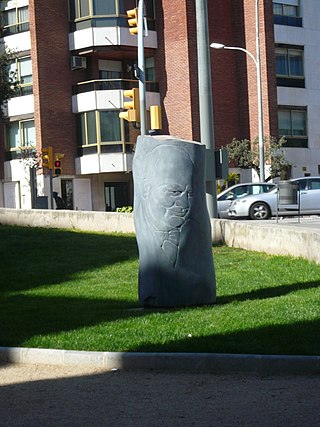
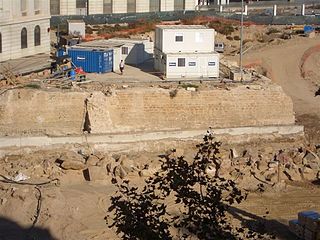
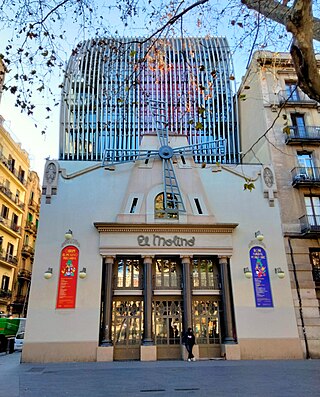
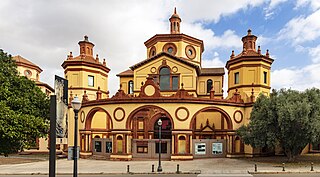
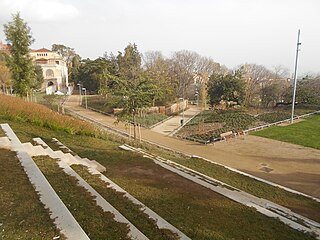
.jpg)
